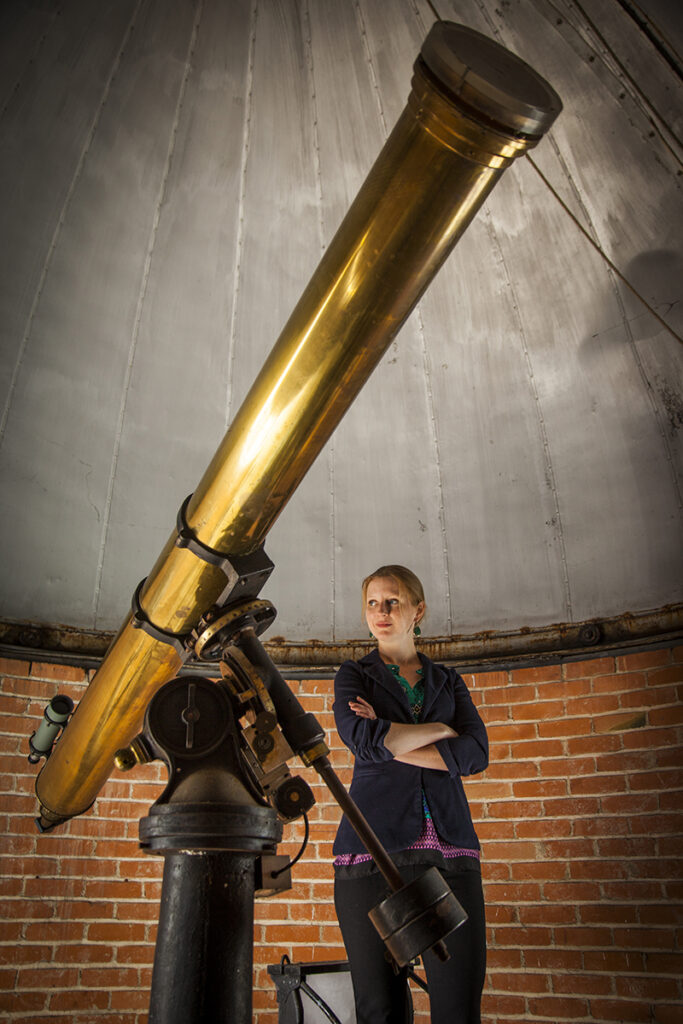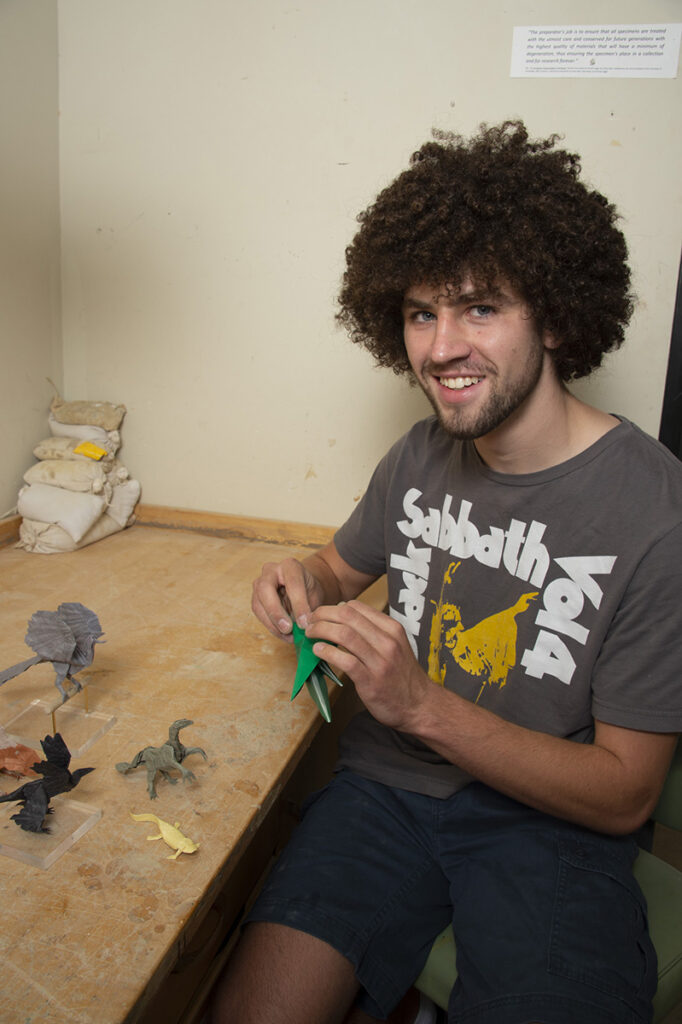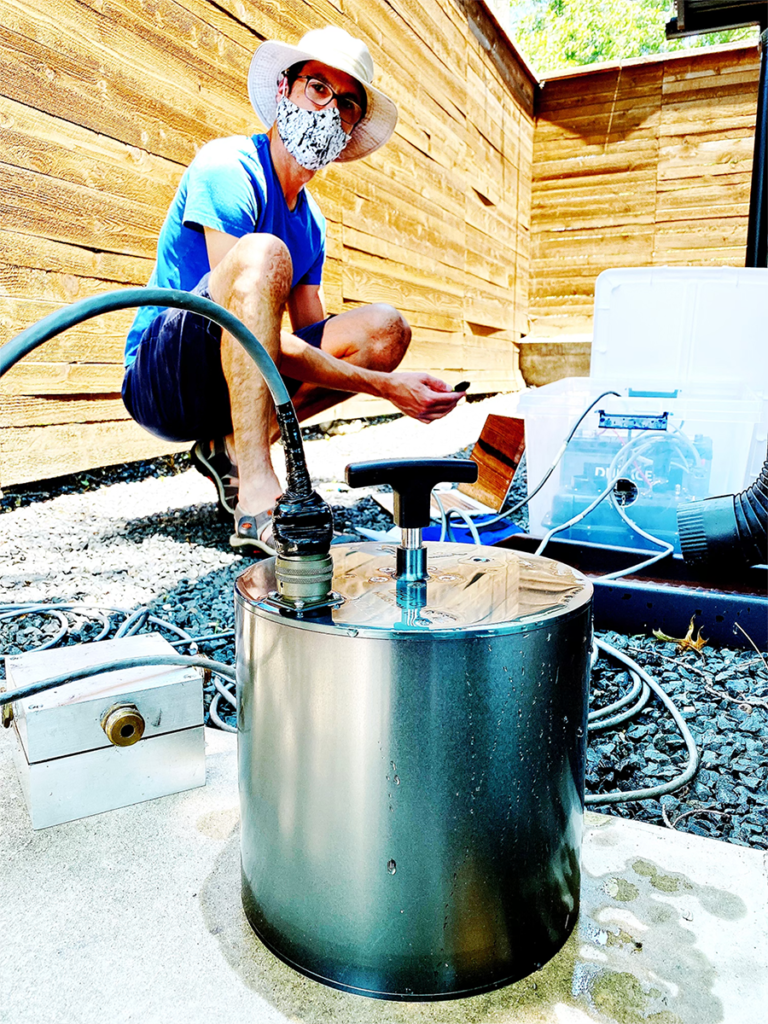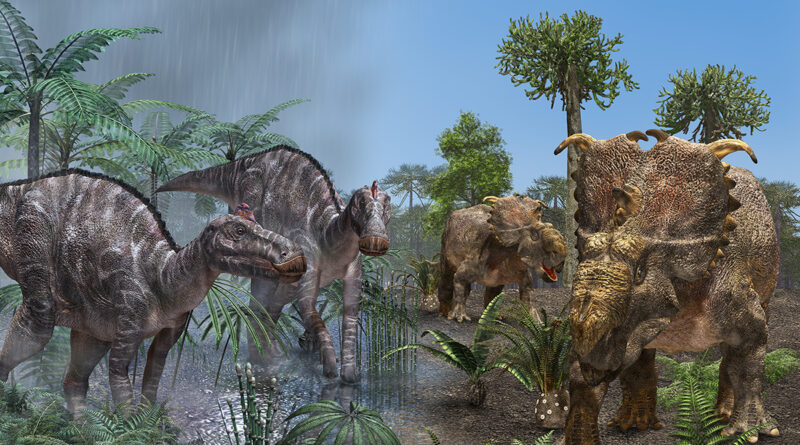Happenings on the Hill
Paper dinosaurs
Though origami is traditionally used for teaching geometry or helping improve thinking skills, SMU paleontology student Travis Nolan uses it to envision complete structures of fossils he has excavated.
The winner of the gold medal in the original design category of the 2021 International Origami Internet Olympiad has combined his childhood fascination with dinosaurs with the Japanese paper folding art.
“When I fold an origami version of the prehistoric animal I am excavating, it helps me know the animal really well,” Nolan said. “Some of the skills needed for reconstructing an extinct animal from its fossils can also be useful for designing that animal in origami.”
Heard around the world
After an explosion on the opposite side of the globe, the SMU geophysicist team recorded infrasound waves.
The undersea Hunga Tonga-Hunga Ha’apai volcano eruption on Jan. 15 in the South Pacific Ocean allowed infrasound waves to be recorded for the first time.
“One of the most exciting things about this event is that we don’t understand how infrasound was detected everywhere on Earth,” SMU geophysicist Stephen Arrowsmith said, “because normally infrasound is very sensitive to the direction of the wind. So normally, we hear infrasound in the direction the wind is blowing, and we don’t hear it where it’s not. But this event was heard everywhere. So, the infrasound was traveling slightly differently from what we’re used to.”

Astrophysicist Krista Lynne Smith warns that low-Earth orbit satellites could block views of real stars. (Photo: Courtesy SMU) 
Paleontology student Travis Nolan combines his love of origami and dinosaurs. (Photo: Hillsman Jackson/SMU) 
Stephen Arrowsmith and other SMU geophysicist team members use infrasound to measure natural and man-made phenomena, with volcanoes, meteors, and explosions such as bomb blasts registering at the loudest end of the spectrum. (Photo: Courtesy SMU)
Climate and ancient dinosaurs
According to a new study by SMU paleontologist Anthony Fiorillo, precipitation and temperature were important to vertebrate herbivore dinosaur populations in Alaska.
Fiorillo’s study is a great way to understand the deep history of the ancient Arctic and the evidence of a flourishing high-latitude terrestrial ecosystem. Fiorillo’s findings suggest that the mean annual precipitation played a more direct role in determining the distribution of herbivorous dinosaurs than the mean annual temperature.
“I think people use the terms ‘climate’ and/or ‘climate change’ often times not fully appreciating all of the parameters that define climate,” Fiorillo said. “One of the key parts of our study is that we were able to tease apart two critical parameters and show their relative role in shaping large-bodied herbivore populations. This is important because these dinosaurs would be classified as keystone species; that is, they were critical to the health of the ecosystems in which they lived.”
No more starry nights?
Imagine looking up at the night sky and not seeing real stars. SMU observational astrophysicist Krista Lynne Smith warns that could soon become a reality because of too many low-Earth orbit satellites.
“Humanity’s view of the true night sky will be cut off,” Smith said. “No human born after this decade will be able to see it.”
Smith wants more regulation.
“Publicly holding SpaceX, Amazon, and other companies accountable for disregarding the consequences is one important step,” Smith said. “The other is urging lawmakers at the state and federal levels to support policies recommended by astronomers, environmental scientists, and industry groups.”









